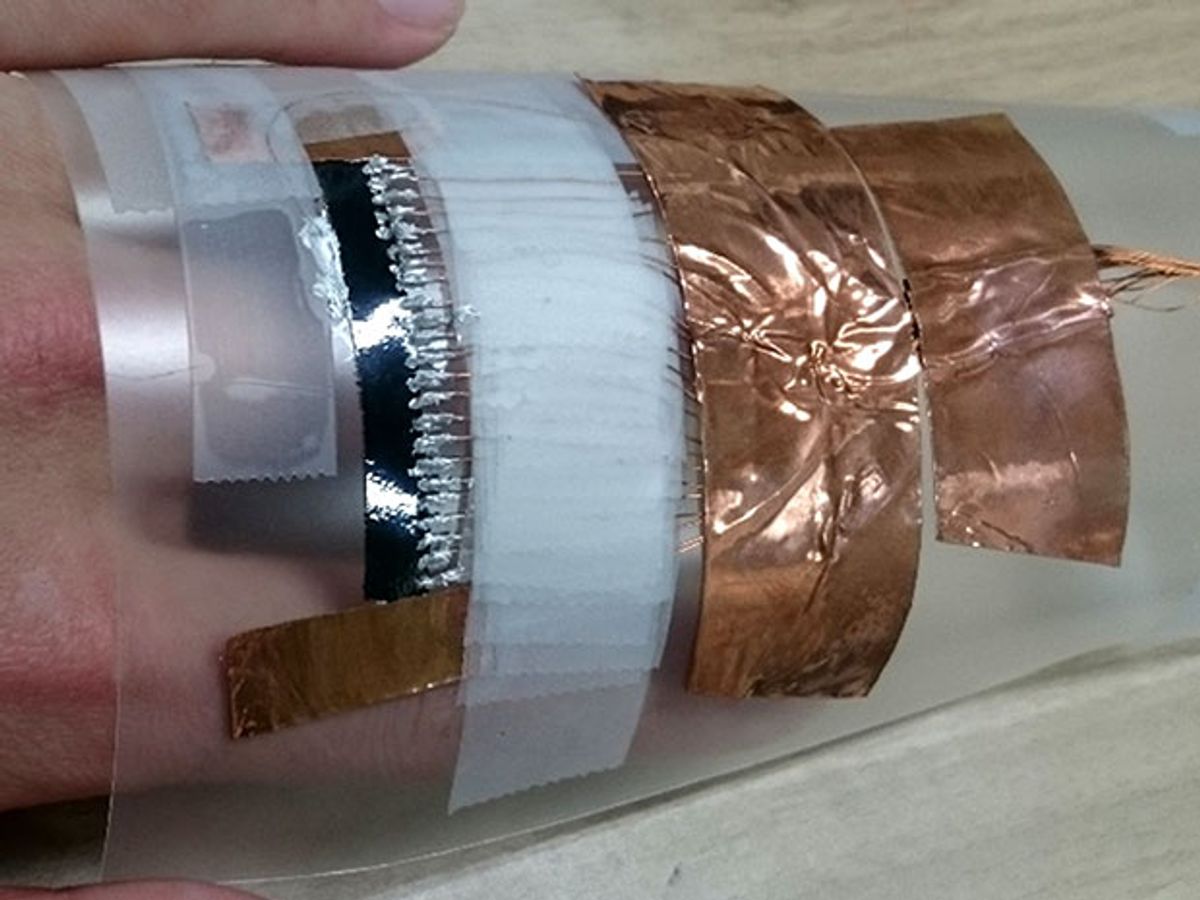Terahertz radiation can peer through objects to spot hidden items and analyze their chemistry, but today’s terahertz detectors are typically inflexible and bulky. Now scientists in Japan have for the first time created a portable, flexible, wearable terahertz scanner in order to better image objects with curves, including the human body.
Terahertz rays, which lie between the infrared and microwave bands of the electromagnetic spectrum, can pass through a wide variety of materials without damaging them. As such, terahertz cameras have great potential for noninvasive, high-resolution imaging. Promising applications include revealing hidden weapons, identifying explosives, and checking for defects in machined parts, among others.
However, conventional terahertz imaging technologies “use inflexible materials and therefore are adaptable only to flat samples,” says Yukio Kawano at the Tokyo Institute of Technology. So these imagers encounter difficulties when scanning most real-life samples—which possess 3D curvature—greatly limiting their use, he says. For instance, terahertz scanners at security checkpoints need to rotate detectors 360 degrees around human bodies to image them, a necessity that makes these systems very bulky.
Kawano and his colleagues devised their new flexible terahertz imaging device from films of carbon nanotubes, which are pipes of carbon only nanometers or billionths of a meter wide. At room temperature, their imager could detect a wide band of terahertz rays, ranging in frequency from 0.14 to 39 terahertz. This work marks "the first realization of a flexible terahertz camera," Kawano says.
The scientists developed portable terahertz scanners that they could wrap around objects. Using these scanners, they could image hidden items such as metal washers or paper clips concealed behind paper sheets or germanium plates or find a piece of chewing gum hidden in a plastic box. They could also identify metal impurities in a plastic bottle and a break in a syringe. These findings suggest this scanner could find use in “high-speed and multi-view inspections of industrial products, especially non-flat samples,” such as plastic bottles and pharmaceutical products, Kawano says.
In addition, the scientists developed a wearable scanner that could detect terahertz rays emitted by a human hand. “The wearable terahertz imaging of human hand without external terahertz sources is an important step for future medical applications,” Kawano says. For instance, this scanner could help inspect a broad range of things including cancer cells, sweat glands, and tooth decay, enhancing “real-time monitoring of daily health conditions,” Kawano says.
"We are planning to integrate our terahertz camera with a signal read-out circuit and a wireless communication device into a single chip and to develop a high-speed terahertz inspection system," Kawano says. "Real-time medical monitoring applications are our next step."
The scientists detailed their findings online 14 November issue of Nature Photonics.
Charles Q. Choi is a science reporter who contributes regularly to IEEE Spectrum. He has written for Scientific American, The New York Times, Wired, and Science, among others.



